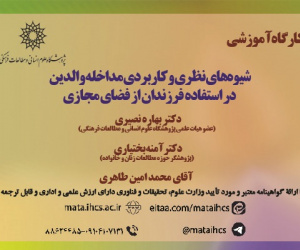واکاوی و تجزیه و تحلیل نقاط ضعف و قوت ژئوتوریستی و ژئومورفولوژیکی در جهت توسعه استان گلستان با استفاده از مدل های (K.F)
آرشیو
چکیده
ژئوتوریسم از جمله مفاهیم جدید در ادبیات جغرافیایی و گردشگری است که بر تعیین مکان های ویژه گردشگری از منظر زمین شناسی و ژئومورفولوژی تأکید می کند. ژئوتوریسم به عنوان شاخه ای از توریسم طبیعت گرا (اکوتوریسم) با هدف مشاهده جاذبه های زمین شناسی و ژئومورفولوژی با تأکید بر حفظ محیط زیست و توسعه پایدار می باشد که در کنار دیگر زمینه های مربوط به گردشگری مانند گردشگری روستایی فرهنگی میتواند نقش مؤثری در توسعه اقتصادی داشته باشد. واکاوی و تجزیه و تحلیل نقاط ضعف و قوت ژئوتوریستی و ژئومورفولوژیکی در جهت توسعه استان گلستان با استفاده از مدل های (K.F) می باشد. مناطق مورد مطالعه شامل مناطق ژئوتوریستی چشمه آب گرم زیارت، آبشار لوه، غار شیرآباد، چشمه گل رامیان، گلفشان نفتلیجه و تپه ماهورهای هزار دره در استان گلستان است که برای ارزیابی این مناطق از مدل های فیولت و کوبالیکوا استفاده شده است. نتایج حاصله از مدل فیولت نشان می دهد که منطقه ژئوتوریستی آبشار لوه با مقدار امتیاز 97/8 بیش ترین امتیاز را به خود اختصاص داده است و کم ترین امتیاز مربوط به منطقه ژئوتوریستی تپه ماهور هزار دره با مقدار 42/8 را به خود اختصاص داده است. هم چنین نتایج حاصله از مدل کوبالیکوا بیش ترین امتیاز کسب شده با مقدار 72/10 مربوط به آبشار لوه می باشد و کم ترین امتیاز به منطقه هزار دره اختصاص یافته است. بنابراین نتیجه گیری می شود که آبشار لوه در استان گلستان دارای پتانسیل مناسبی در سطح استان تلقی می شود. در نهایت پیشنهاد می گردد در مطالعات آتی از مد ل های جدید ژئوتوریستی استفاده گردد.Investigation and analysis of geotourism and geomorphological strengths and weaknesses in the direction of the development of Golestan province using (K.F) models
Geotourism is one of the new concepts in the literature of geography and tourism, which emphasizes the determination of special places for tourism from the point of view of geology and geomorphology. Geotourism is a branch of nature-oriented tourism (ecotourism) with the aim of observing geological and geomorphological attractions with an emphasis on preserving the environment and sustainable development, which, along with other fields related to tourism such as cultural rural tourism, can play an effective role in economic development. Analysis and analysis of geotourism and geomorphological strengths and weaknesses in the direction of the development of Golestan province using (K.F) models. The studied areas include the geotourist areas of Ziarat hot spring, Loh waterfall, Shirabad cave, Gol Ramian spring, Naftlije golf course and Mahorhai hill of Hazardera in Golestan province, which Feuillet and Kubalikova models were used to evaluate these areas. The results of Feuillet model show that the geotourist area of Loh Cascade has the highest score with a score of 8.97, and the geotourist area of Tepe Mahor Hazar Dara has the lowest score with a score of 8.42. Also, the results obtained from the Kobalikwa model show the highest score with a value of 10.72 related to the Loh waterfall and the lowest score is assigned to the Hezar Dareh area. Therefore, it is concluded that Loh waterfall in Golestan province is considered to have a good potential at the level of the province. Finally, it is suggested to use new geotourism models in future studies.











